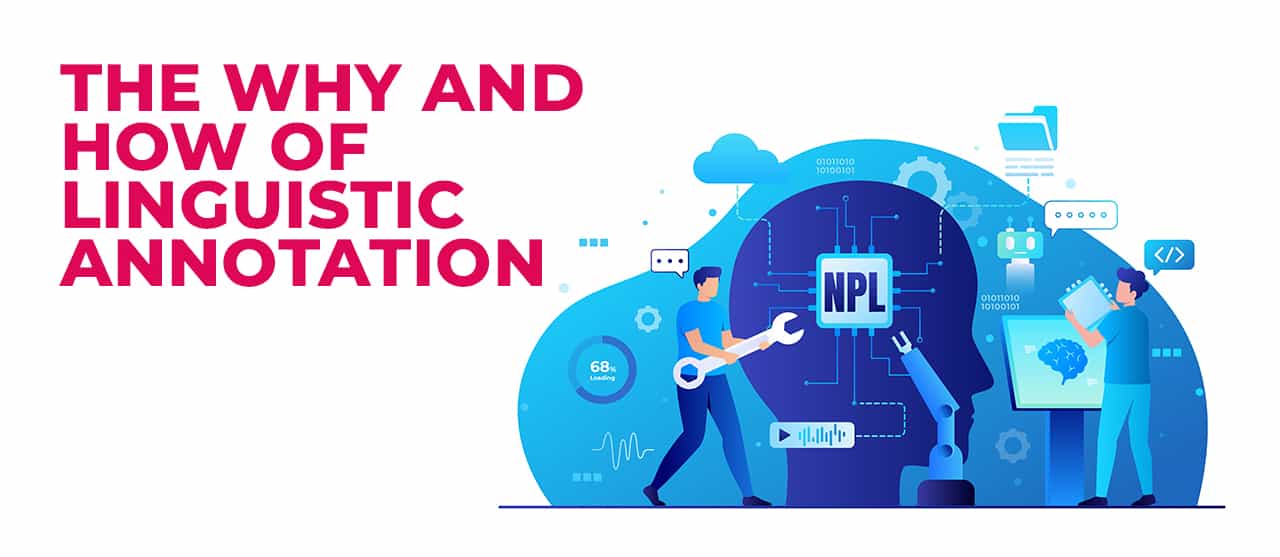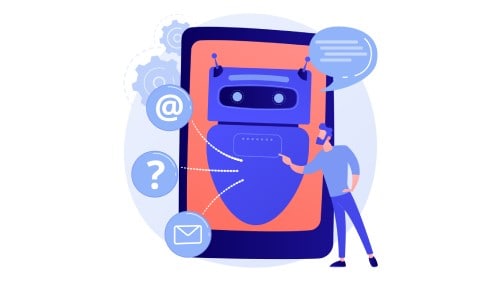
What started as a way to test linguistic theories has now transformed into a method for computers to comprehend natural language on the web. However, the idea of linguistically annotated data complementing the field of natural language processing (NLP) has been around for quite a while.
Historically, the lack of computing power has restrained leveraging big data to map out the internet’s verbal landscape. So, while computers have accommodated language-intensive information sharing, they haven’t really been able to understand the semantics behind what is being shared.
Considering the many valuable applications of natural language understanding (NLU), it is essential to harness its tremendous power and apply it inclusively and not just for a select few. To do so, we need to take linguistic annotation to the next level and make it computationally feasible so that we can leverage its power to develop better services and systems.
So, what is a linguistic annotation?
Linguistic Annotation — A Primer
Linguistic annotation is the process of connecting computer-readable data to its meaning for the purpose of decision-making. Technically, it entails annotating text with linguistic metadata that can be used by sentiment analysis or NLP engines to identify sophisticated patterns in language.
Over the last few years, more and more linguistic data has been made available via online corpora. Corpora (singular: corpus) refers to text archives (datasets) that contain all the available linguistic data for a language or dialect. Sketch Engine maintains the list of the most popular open corpora, such as English Web 2020 (enTenTen20), containing 38 billion words.
It’s worth noting that this raw data could also be in different formats (audio, video, etc.) and not just text. As a result, linguistic annotation isn’t confined to textual analysis. The annotations could be applied to different formats: transcriptions, time labels, discourse commentary, sense tags, etc.
Why is Linguistic Annotation Necessary?
The Technological Perspective
- Uncovering the relationship between language and machine learning: Machine learning algorithms can be used to analyze and discover different data patterns from language-intensive interactions on the web. The idea of mapping a language into a mathematical formula is not new and has been used primarily in statistics and machine learning. Applying linguistic annotations to the vast corpus of data available is instrumental in improving NLU algorithms.
- Incorporating text or voice data into the analysis: Considering the exponential rise of audio and video information sharing, linguistic annotation is necessary to provide a more holistic understanding of the universe of available data.
The Business Perspective
- Borrowing insights about interactions: Analyzing linguistic data reveals insightful details about how the world communicates with itself. These insights can be utilized to improve services and develop new ones. For example, analyzing the sentiment of tweets related to a particular brand will help understand consumer perceptions and associated behavior for a set of products. With these insights, brands can optimize and scale their offerings.
- Constructing a definite path-to-purchase: Intent detection is one of the main challenges in NLP. Generally, a buyer is concerned with a particular query and searches for a particular solution based on that intent. With linguistic annotation, buyer intent can be understood at a granular level, allowing for the mapping of a more concrete path to purchase.
- Improving customer support: Linguistic metadata can be used to train conversational artificial intelligence (AI) chatbots, which are becoming more ubiquitous across both B2B and B2C customer experiences. As the volume of data available to the chatbot increases, the more profound its conversation with the customer becomes. Additionally, by incorporating sentiment analysis, chatbots can help customers get faster feedback regarding their inquiries while enabling their ability to sense the need for empathy and as necessary, transfer conversations to a human agent.
The Most Common Linguistic Annotation Approaches
As discussed above, the main idea behind linguistic annotation is to provide a taxonomy of discernible patterns in a language. Based on that idea, there are various ways to carry out the process of linguistic annotation. While there are many, below are a few of the most common approaches used today.
- Part-of-speech Tagging: This method involves appending a label to a token (words excluding punctuation) in a sentence. These labels are then used to determine the part of speech of the given token.
- Discourse Structure and Analysis: Discourse structure categorizes sentences into linguistic units based on their temporal and logical connections.
- Phonetic Segmentation: Phonetic segmentation is the process of grouping phonemes in words and identifying how the phonemes connect. It is employed for the analysis of speech signals and related tasks.
Challenges in Linguistic Annotation
Although linguistic annotation is necessary to facilitate NLU, there are some challenges. It’s important to understand them and devise ways of addressing them.
- Scaling up the effort: Linguistic annotation is computationally expensive. Although human intervention is always required, to overcome this issue, more robust annotation is needed that minimizes the necessary manual labor.
- Quality assessment: The validity of your analyses requires a strong and continuous quality assurance program.
- Employing a human-machine approach: Annotation processes cannot be entirely automated, because a certain level of expertise is required to interpret the signals from textual data. For this reason, a human-machine combination is the best way to validate annotated data.
Using the Right Annotation Tool: Given the enormous volume of data requiring linguistic annotation, it’s important to use a tool with the proven ability to deliver the desired results.
Use Our Expertise for Bespoke Solutions
With the growing level of competition in the field of NLP, the need for linguistic annotation has increased dramatically. Businesses that are not taking advantage of these new capabilities are falling farther behind their competition with each passing day. The same can be said for companies who are trying to tackle this on their own without the benefit of third parties who have expertise in this area.
Reach out to us to learn more about how our experts at EnFuse can help you fully leverage the value of your data to optimize your business processes, improve your customer experiences, and grow your revenue and profits.
Leave a Reply
Your email address will not be published. Required fields are marked *


















Comment